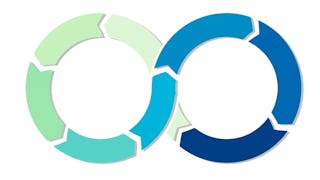Security is the top concern of businesses today. This course shows developers how to mitigate security risks by implementing DevSecOps best practices. Every organization with a DevOps framework should be looking to shift toward a DevSecOps mindset, bringing individuals of all abilities and across all technology disciplines to a higher level of proficiency in security. From testing for potential security exploits to building business-driven security services, a DevSecOps framework that uses DevSecOps tools ensures security is built into applications rather than being bolted on haphazardly afterwards.



Securing Your DevOps Pipelines

Instructor: Pearson
Access provided by University of Western Australia
Recommended experience
What you'll learn
Build a DevSecOps pipeline in CircleCI with several industry standard tools
Deploy a TypeScript full-stack app and see how DevSecOps reports security risks
Learn how to get your organization onboard with a security and DevOps mindset
Perform simple automated security audits to further check for vulnerabilities
Skills you'll gain
Details to know

Add to your LinkedIn profile
6 assignments
August 2025
See how employees at top companies are mastering in-demand skills

There is 1 module in this course
This module introduces DevOps and its evolution into DevSecOps, emphasizing the importance of integrating security into development pipelines. Learners explore key security risks, the OWASP Top 10, and how DevSecOps mitigates vulnerabilities. The course covers essential security testing types and tools, guides students through building a secure pipeline with CircleCI, and concludes with advanced security practices like penetration testing and compliance audits. By the end, participants gain practical skills to implement and secure DevOps pipelines, preparing them to enhance application security in real-world environments.
What's included
33 videos6 assignments
Why people choose Coursera for their career




Explore more from Information Technology

Macquarie University

Board Infinity

Johns Hopkins University


